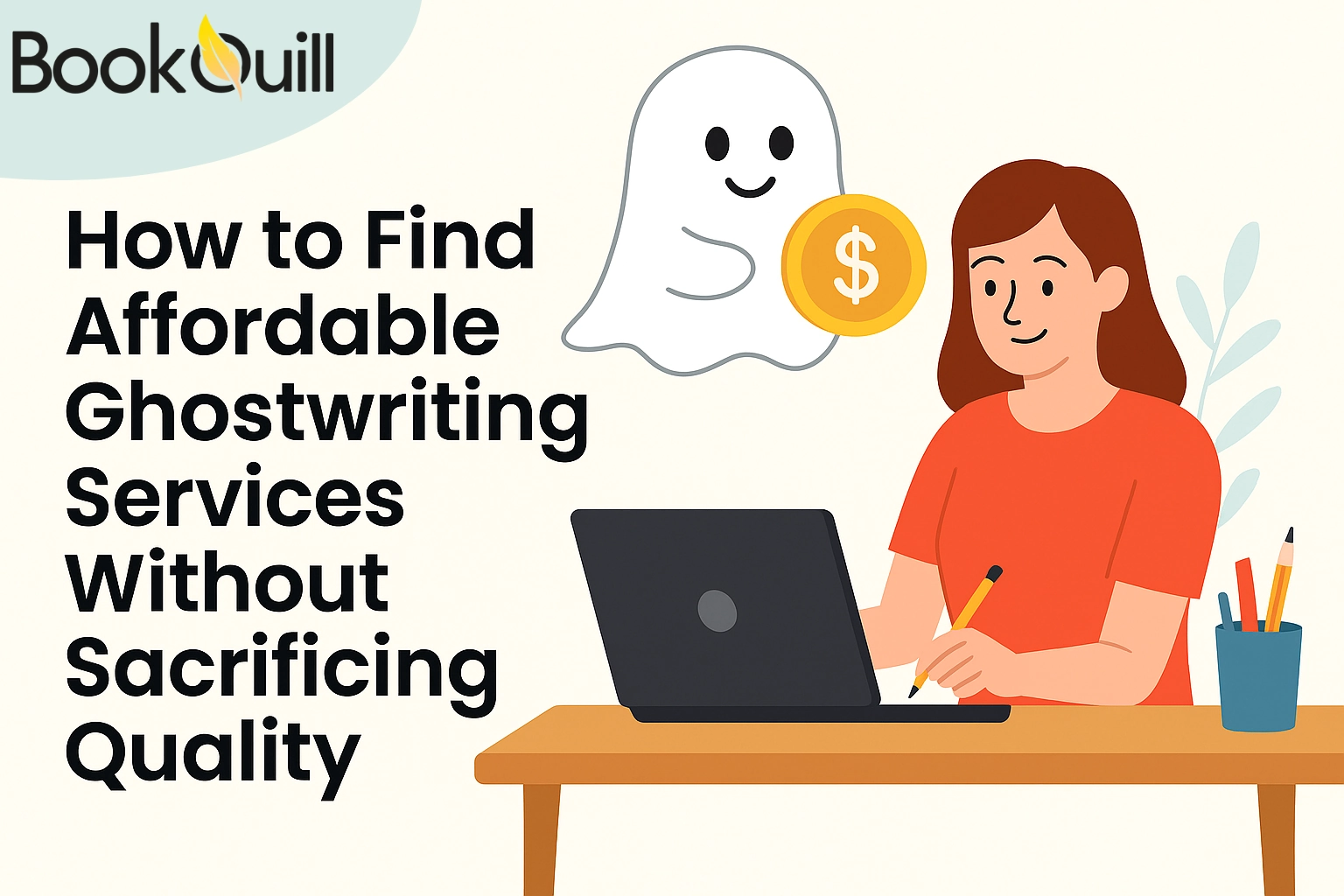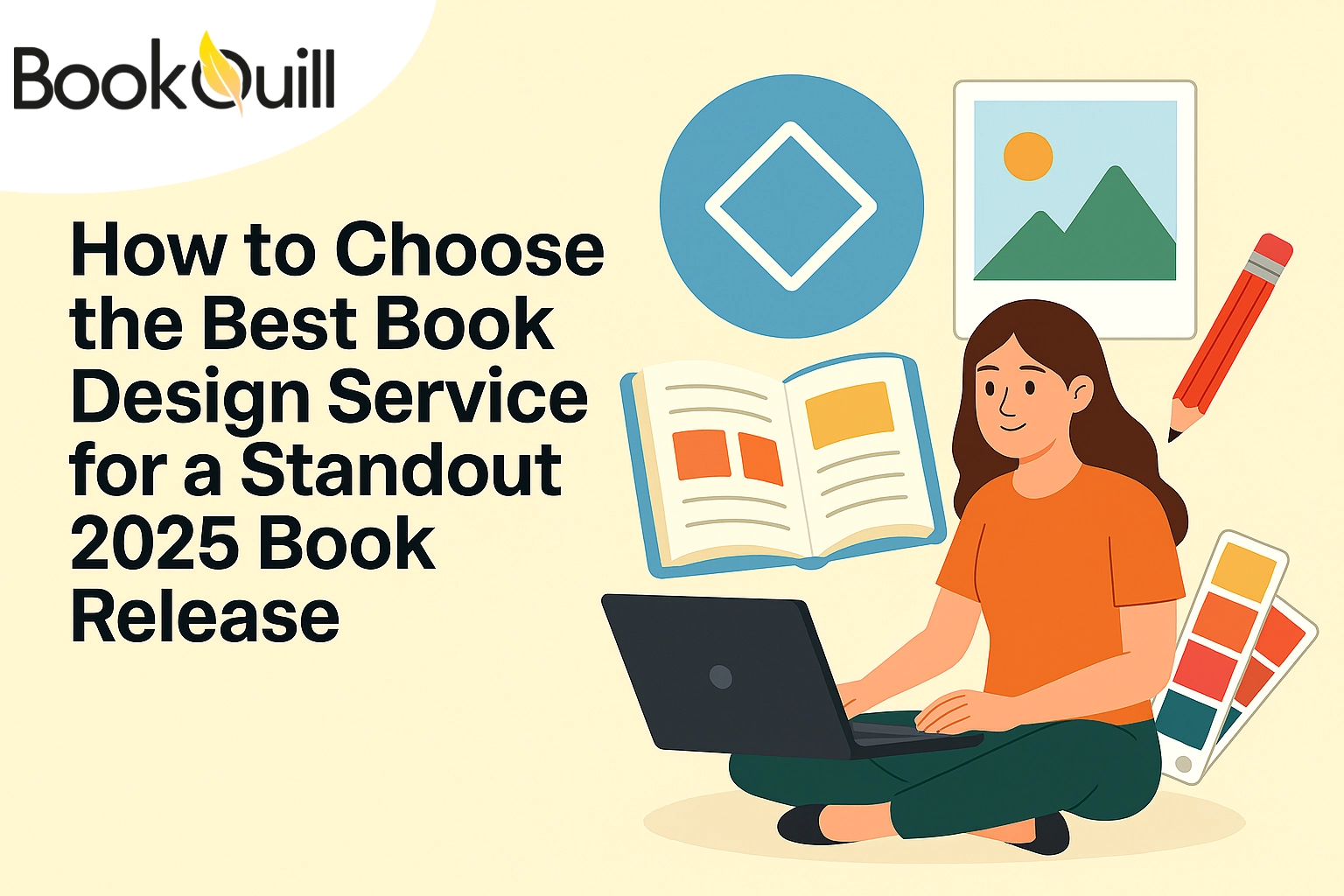Table of Contents
Explore Blogs
Trending on Ebook
How to Communicate Your Vision Clearly to a Book Illustrator

Have you ever seen a book cover and immediately recognized the genre, tone, or even a part of the plot right away? It’s no coincidence.
A well-drawn illustration isn’t just a beautiful picture but a message! At just one glance, a reader can feel tension, whimsy, wonder, or heartbreak. That’s the visual power authors have at their fingertips… if they know how to use it.
The challenge? Authors often struggle to express their visual ideas. It might be annoyingly abstract to describe a character’s appearance, a style, or a mood. “I want it to feel magical”, okay, but is that Hogwarts magical or Studio Ghibli magical? The difference matters.
This is when working with a book illustrator becomes incredibly important. The ability to clearly communicate your vision can mean the difference between a cover that sells and one that sits.
In this post, we will walk you through explaining what do illustrators do, who they are, how to avoid costly misunderstandings, and most importantly, how to realize your idea. By the end, you will be clear on how you communicate effectively with a communicate illustration vision , and you will know where to get professional book illustration services that will make your story pop off the page.
Key Takeaways
- The Key Is Clarity: To prevent ambiguous and confusing briefs, authors should define their genre, tone, audience, and visual style before collaborating with a book illustrator.
- Illustrators Don’t Just Draw: An illustrator uses images to convey the ideas and feelings of your story, producing impactful book covers and captivating scenarios that draw readers in.
- Avoid Communication Mistakes: Misunderstandings are often caused by vague language and a lack of references. Clear, specific direction paired with mood boards or style examples helps ensure alignment.
- Expert Illustrations Help Books Sell: Purchasing professional book illustration services can significantly raise sales and reviews, increase reader clicks, and establish the trustworthiness of the book.
- Collaboration Produces the Best Results: Give detailed briefs, respectful feedback, and trust illustrators’ artistic insights to make your vision come alive.
What Does a Book Illustrator Actually Do?
Before we go into the “how,” let’s speak about the “what.” What is a book illustrator?
A book illustrator is a visual artist who creates pictures, sketches, or other artwork to support and improve a book’s textual material, particularly in graphic novels, children’s books, and visually rich nonfiction.
Now, what do they do? They transform your story’s characters, themes, tone, and mood into beautiful artwork. This may consist of:
- Cover Design: The first thing a reader sees is the cover design. An illustrator makes sure it immediately conveys genre, tone, and stakes while also grabbing the viewer’s attention.
- Interior Illustrations: These pictures improve the reading experience and help readers remember important events. They are particularly common in children’s books and fantasy novels.
- Character and World Development: Illustrators capture the soul of your book, whether it’s the soft twilight of a haunting village or the curve of a villain’s smirk.
But here’s where things get even more interesting! Good illustrators don’t just draw what you say; they read between the lines. They interpret subtext, symbolism, and genre expectations. Because of this, strong cooperation produces more than just images; it produces a compelling narrative.
Knowing what illustrators do enables you to appreciate their work and modify your ideas so that they may be interpreted clearly. And if you are thinking of DIY-ing your visuals? Stop. It’s time to talk about professional book illustration services.
Common Reasons for Gaps between Illustrator and Author
Let’s be honest for a moment. Even the most talented writer can produce a completely unclear brief. And even the most skilled illustrator may misunderstand an unclear directive entirely.
Here’s what often goes wrong:
- Vague Description: “I want something magical.” That’s nice. But is it magical like Narnia or like Neil Gaiman? Be specific.
- Absence of Reference: It would be equivalent to describing a song without ever singing it if no visual references were included. Your idea of “dark” may look like a Tim Burton film. Theirs might look like a thunderstorm in grayscale.
- Genre Confusion: Readers will misinterpret your work if it is a romantic fantasy, yet the cover says post-apocalyptic thriller.
- Too Much Direction: Accurately controlling each pencil stroke might stifle the creative process. An artist, not an AI prompt generator, is what you are hiring.
Synergy between illustrator and author is, therefore, a dance. Making a mistake can cost you money, time, and your sanity. But when you are in sync, magic happens. And with clear communication, that magic is totally within reach.
Clearly Identify Your Own Vision before the Meeting
Take a good and long look in the creative mirror before you sit down with your book illustrator. Do you know what you want?
Here’s a checklist to get crystal clear on your vision:
1. Genre
Genre seems obvious, doesn’t it? However, your genre dictates everything, from color palettes to typography. A thriller will appear edgy and sharp. A book for kids? Colorful and playful.
2. Audience
Do you write for adults, teenagers, or toddlers? Children’s illustrations are bright and realistic. Adults? They expect emotions and symbolism.
3. Tone
Is your novel light and whimsical? Or grim and gritted? Use adjectives like “warm,” “eerie,” “sarcastic,” “mysterious,” and “epic” to describe your tone.
4. Color Palettes
Color conveys emotions. Blue’s tune is soothing or depressing. Reds can be romantic or intense. Greens may taste fresh, earthy, or uncanny. Choose color schemes or make references to particular art forms.
5. Characters
Write about your main character as if you were casting them in a movie. “She is a teen with big eyes, untidy auburn curls, and eyes that are too curious for her own good.” Extra points for actor similarities or mood boards.
Need help? Go for BookQuill for the best illustration book cover design services. They will not just provide you with the best outcome but will also guide you every step of the way.
How to Brief a Book Illustrator like a Pro
After defining your concept, it’s time to present it in a format your book illustrator can utilize. Consider your illustrator to be a visual co-author of your story. You must write a brief that is as clear as your plot twist on page 212 to assist them in doing their magic.
This isn’t about giving your illustrator a thesis that is twenty pages long. Here’s how to create a compelling brief that establishes the framework for an easy, imaginative, and fruitful collaboration:
1. Set the Scene
Give a concise and spoiler-free description of your story first. Act as though you are writing a synopsis for a movie trailer. What’s the essence of the world?
Answer these questions:
- Who is the main character?
- What is the central conflict?
- What kind of emotional arc does the story follow?
This helps your illustrator understand the tone and significance of the images they produce. It’s particularly useful for illustrators who have to represent complicated fantasy worlds or subtle tones.
2. Main Characters
Then, make your characters come to life on paper. Look beyond clothes and hairstyles. Illustrators must understand the emotions of characters. What body language do they display? Do they walk in as if they own the world, or do they slouch from sadness?
Instead of saying:
“A man in a lab coat, tall and thin.”
Say:
“A late-fifties inventor who is lanky, has wild hair like Einstein, has a permanent ink stain on his nose, and has the slightly insane appearance of someone who hasn’t slept in three days because he’s trying to figure out the secret to perpetual motion.”
Now we’re talking! This provides a palette of emotions and images for your book illustrator to work with.
3. Symbolism
Symbolism is important, particularly on book covers. Describe the meaning of any recurring objects or motifs, such as a crimson scarf, a cracked watch, a key, or a raven.
Is the raven just a bird? Or does it symbolize memory and death in the universe of your protagonist? Does the shattered watch represent wasted time or strained family bonds?
Your illustrator isn’t psychic. For these elements to be included in the finished artwork, they must be openly conveyed if they are significant. This step is what transforms good illustration into layered and meaningful design.
4. Style References
Now here’s the fun part. Style direction. Many briefs get either too overpowering or too ambiguous at this point. The secret is to make references to your favorite things without confining the illustrator.
Items to Include
- Illustrations or artwork from other publications.
- Movie stills or posters.
- Mood boards on Pinterest.
Particular features that appeal to you: “line-heavy ink work,” “moody chiaroscuro lighting,” or “soft pastel watercolor” also
For instance:
“With a pastel color scheme and ancient Egyptian themes, I want the cover to evoke the dreamy, magical vibe of The Night Circus.”
That kind of statement gives your illustration book cover design service all the information they need to get going with assurance.
5. Format Notes
Talk technical before any pens or styluses touch paper or screens:
- Is your book available only as an e-book, paperback, or hardcover?
- Will you require endpapers, back cover art, or spine art?
- What are the file or size requirements set by your publisher?
Your illustrator must be familiar with safe zones, bleed margins, and trim sizes if you plan to self-publish. The more upfront you are, the fewer production headaches you will have later.
Moreover, don’t forget resolution. Make sure the illustrator is using at least 300 DPI for printing. (Don’t worry, most experts are already aware of this, particularly if you are collaborating with a group that provides professional book illustration services.)
Keep in mind that you are not required to utilize fancy art terms or draw the artwork. All you have to do is express yourself creatively and clearly. The purpose is to guide and inspire, not to teach.
By putting in this effort upfront, you’ll build trust and ensure the illustrator’s time and your budget are spent creating artwork you will both be proud of.
How to Give Feedback Without Confusing Your Illustrator
Giving feedback is a skill in itself. Here’s how to do it without ruining the vibe:
- Be specific: “Make it darker” is vague. Try “To give the character a more haunted appearance, could you add deeper shadows under her eyes?”
- Pay Attention to How You Feel: Tell the illustrator your desired mood for the scene. “Is it possible for the town to appear more isolated, as though it hasn’t been visited in decades?”
- Give Credit for What’s Working: Before discussing what has to be changed, say something like, “I love the composition,” or “The mood here is perfect.”
- Avoid Micromanaging Methods: Have faith in their procedure. You are hiring a creative mind, not a helping hand.
This builds respect for one another and guarantees that your experience using professional book illustration services feels collaborative, not controlling.
Selecting the Best Illustration Service
Illustration services vary from one another. Some are comic book-style experts. Others are best dreamy watercolor. But who should you look for?
What to look for is as follows:
- Variety of Portfolio: Are there samples in your genre?
- Style Adaptability: Are they able to change their looks according to your tone?
- Publishing Expertise: Are they aware of DPI, bleed, spine margins, etc.?
- Effective Communication: Are they patient, professional, and quick?
Who’s the best? Affordable book illustration services that provide collaborative deadlines, personalized formatting, and the finest book cover design.
Final Thoughts
The world of your story is in your hands. The brush is held by a book illustrator.
But those two things never come together in the absence of clarity. A lot can be lost due to misunderstandings. But equipped with the above-mentioned templates, tools, and advice? You’re prepared to work with others like a pro.
Keep in mind that great books look as good as they read. Therefore, now is the best moment to find the best illustration book cover design services to bring your vision to life, regardless of whether you are just beginning your work or getting ready for publication.
Prepared to transform your idea into outstanding illustrations? Explore our professional book illustration services offered by BookQuill, and see how your book goes from words to wonder.
Frequently Asked Questions
What Should I Include in a Brief for a Book Illustrator?
Character descriptions, tone, preferred colors, reference photos, and a synopsis of the story are all essential components of a strong brief. The more detailed, the better the outcome.
Can I Provide My Illustrator With Feedback While the Project Is Underway?
Of course! Just be sure that your criticism is outcome-oriented, constructive, and clear. It shouldn’t be controlling or technical.
How Can Authors Get High-Quality Illustrated Book Covers Without Overspending?
Book cover design services provide custom artwork that reflects your book’s theme, without the premium price tag. It’s perfect for authors on a budget who still want standout visuals.
What Effect Do Illustrations Have on the Sales of Books?
Publishing studies show that books with excellent covers and images have a much higher chance of attracting readers and converting clicks into sales.
Do I Need Illustrations Inside My Book or Just on the Cover?
Your genre will determine this. While most novels focus on a captivating cover design, children’s books, fantasy, and graphic novels benefit from internal art.
What Happens If I’m Unsure of My Visual Preferences?
Figure out the tone, genre, and target audience of your work first. Make use of mood boards or reference photos, and have faith in your book illustrator to provide creative direction.
About Author
Hi My name is Tyler Brooks As a professional book illustrator, I’ve witnessed firsthand how a well-drawn cover can be the key to a book’s success. Despite the saying, ‘Don’t judge a book by its cover,’ the reality is that people do—and those judgments matter. That’s why I’ve made it my mission to help aspiring authors understand the power of great illustrations and how they can make or break your book.




